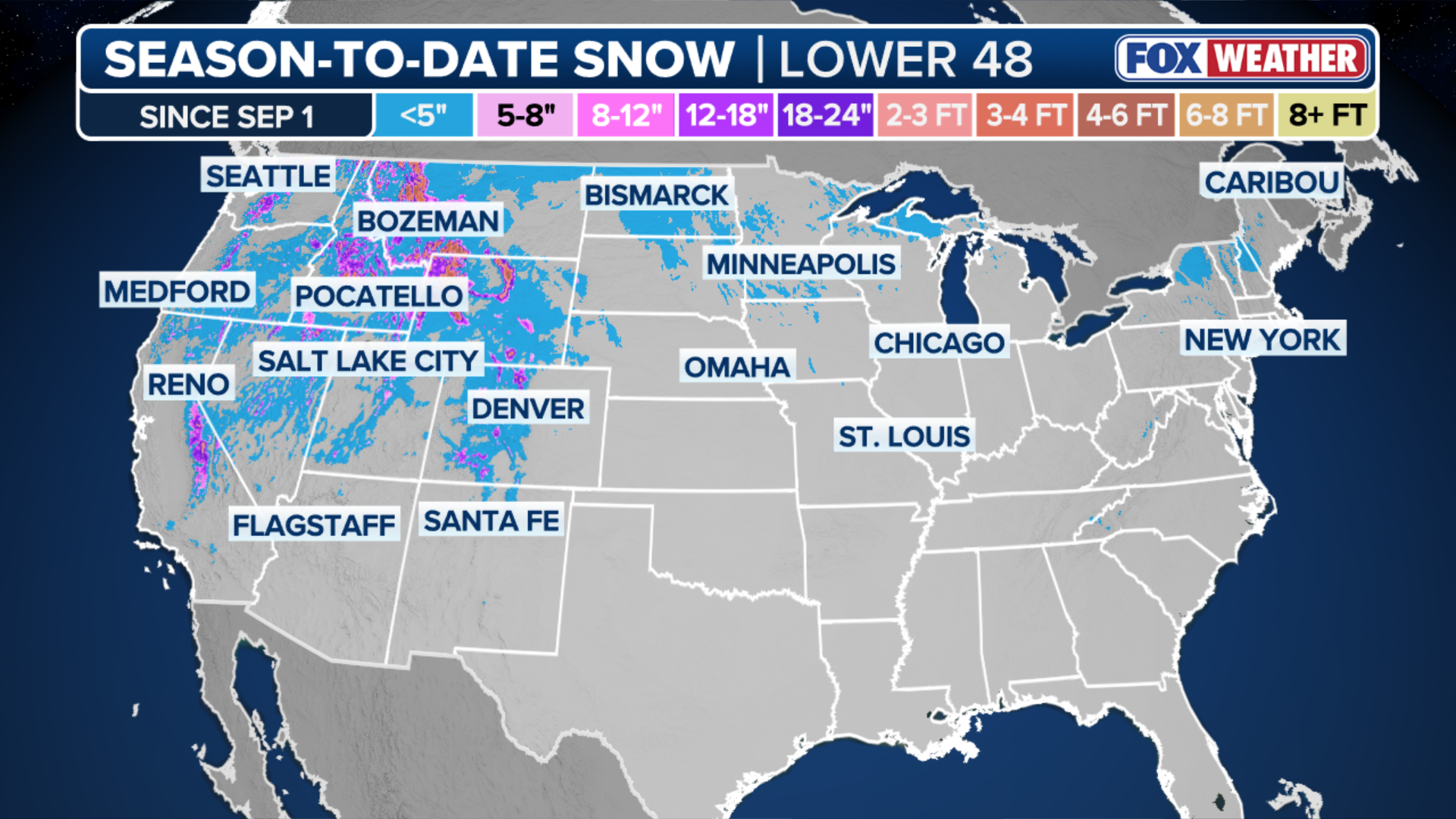La Niña winter 2025 snow forecast: How much will it snow across America?
The La Niña climate pattern has taken hold of the U.S. ahead of the start of meteorological winter, which forecasters say typically spreads more snow across the Northern Tier of the U.S. and nasty conditions for the Northeast and New England.
La Niña is one of three climatological phases of the El Niño-Southern Oscillation (ENSO) that describe natural changes in Pacific Ocean temperatures and atmospheric circulation that can greatly influence global weather.
La Niña describes colder conditions, El Niño describes warmer conditions and ENSO neutral refers to a state where temperatures are close to average.
WHAT ARE EL NINO AND LA NINA CLIMATE PATTERNS?
NOAA released its winter outlook for the upcoming season, which indicates that the Pacific Northwest and the Upper Midwest will likely see below average temperatures, in addition to above-average precipitation.
While these outlooks do not predict snowfall, these conditions are the ingredients for a snow-lover’s dream.
This also correlates with historical trends. The FOX Forecast Center noted that the Northern Tier and Northwest typically see more snow during La Niña winters, while the southern part of the country typically stays warm and dry.

This graphic shows the impact a La Niña winter has on snow in America.
(FOX Weather)
The La Niña pattern also tends to bring more frequent Nor’easters along the Eastern Seaboard, which has already seen several coastal storms this fall.
ESCAPE WINTER: CHECK OUT THE TOP 5 WARM-WEATHER DESTINATIONS TO VISIT THIS WINTER
Meanwhile, measurable snow has fallen in the higher elevations in the Rockies, Cascades and Sierra mountain ranges, as well as the mountains of the interior Northeast.
Notably, North Carolina‘s Mount Mitchell recorded its first snow of the season last week.

First snow of 2025-26 winter season falls atop Mt. Mitchell on North Carolina on Oct. 29, 2025.
(NWS Greenville-Spartanburg / NOAA)
Locales at lower elevations in the interior Northeast, including Boston, typically see their first snow in the final weeks of November, while the first flakes across the rest of the country usually fall in December.

(FOX Weather)
According to the FOX Forecast Center, no major snowstorms are on the horizon for the U.S.
The snowiest months for most of the country are typically January and February.
NOAA indicated that the U.S. may shift back to ENSO neutral around the start of January, which historically has brought increased snowfall totals to the Northeast.
Source link
editor's pick
latest video
Sports News To You
Subscribe to receive daily sports scores, hot takes, and breaking news!













